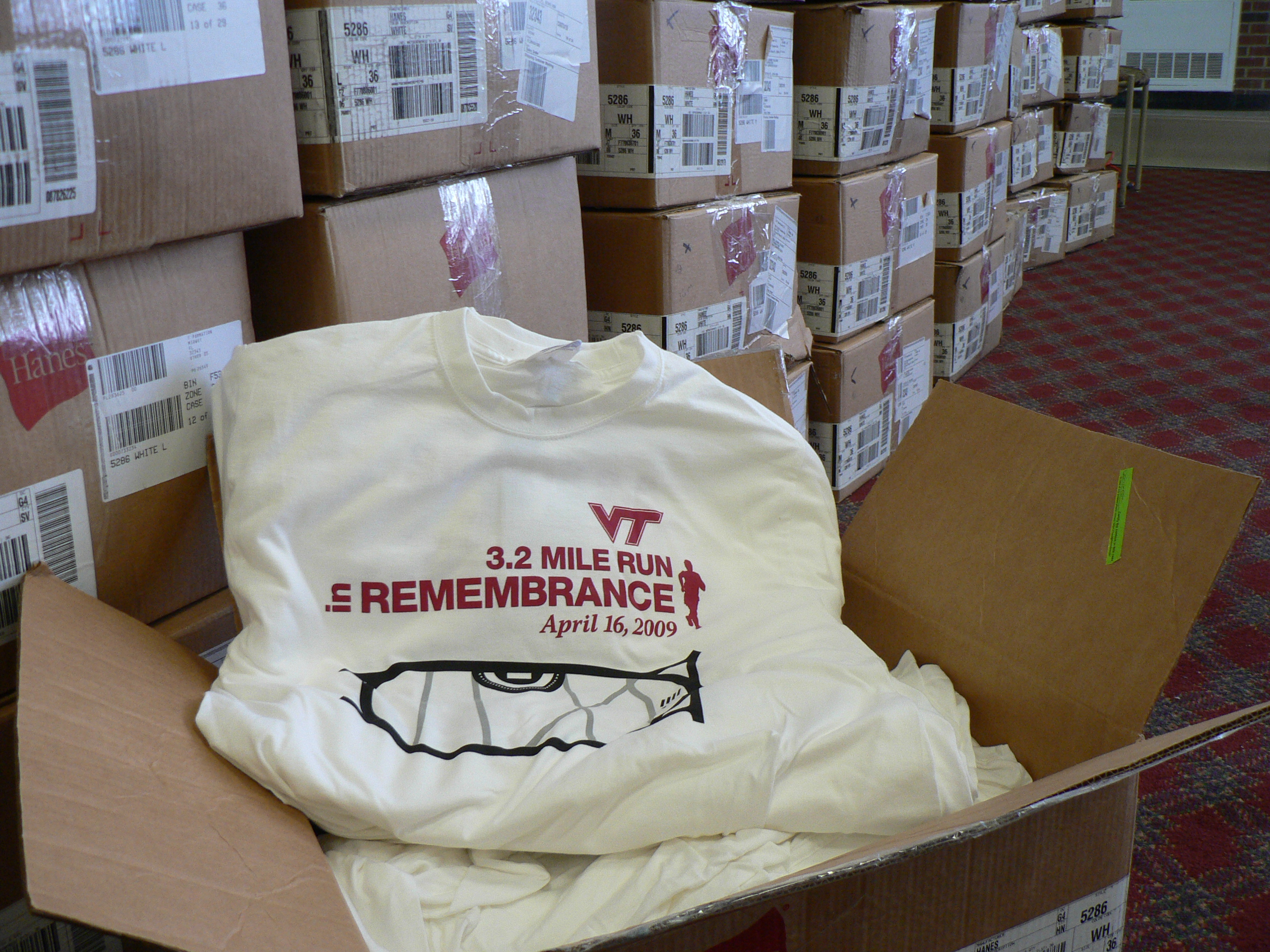Jogging forward, thinking back

Kristina Anderson was an avid jogger before she was wounded in Norris Hall on April 16, 2007. She needed rehabilitation to walk again, much less to run. But she is jogging regularly again now, moving forward with her life without forgetting.
“The first time that I could run at any pace, I was like, ‘I’m going to be OK,’” Anderson said, referring to not just to her body, but her emotions.
On Thursday, the senior international studies major in the College of Liberal Arts and Human Sciences from Vienna plans to lace up her running shoes alongside thousands of people. They will run or walk 3.2 miles in honor of the 32 people lost two years ago.
As of Tuesday afternoon, more than 3,300 people had registered for the initial 3.2 Mile Run in Remembrance, seven times more than for any previous run/walk that has been held on campus. Officials decided to open the university two hours late because of the volume of participants, as well as the unusual route for the event, which ends on the Drillfield in front of the April 16 Memorial.
Organizers who had planned to give away T-shirts to the first 500 people to register had to increase their order, and will now give shirts to the first 1,500 registrants.
“I am a bit surprised at the overwhelming numbers, and very excited,” said Virginia Tech Student Government Association President Emily Mashack, a junior from Round Hill who is majoring in human nutrition, foods and exercise in the College of Agriculture and Life Sciences. “In the beginning we talked about 500 to 600 runners and within days of the run being posted we had well over that. Though, a part of me isn’t completely surprised. This community is extremely supportive, and any opportunity to come together seems to resonate extremely well.”
Scott Johnson, is associate director of the Virginia Tech Office of Recovery and Support. He says he believes the event has drawn so much interest because “it’s a way to physically demonstrate one’s concern for the victims, and it involves a demonstrable effort and a bit of a physical challenge. Most people don’t run three miles every day, so it has that symbolic value. And when you’re running with [so many] people you certainly are aware of the significance of the event, and the significance of the lives of the people ... and the importance of honoring them, honoring the survivors, honoring their loved ones ... This is a way for pretty much anyone who can walk to do that.”
Each of the first 2,500 participants in the 8 a.m. event will be given an orange or maroon balloon to release before the run/walk begins. Thirty-two white balloons will also be released in memory of those lost. All of the balloons, and their strings, are biodegradable.
As Anderson starts running, there’s a good chance the white balloon released for Leslie Sherman will still be aloft. And there’s a good chance Anderson may think of Sherman as she runs. Two years ago they shared a Russian class and a French class.
Sherman once ran a marathon in four hours and two minutes. Anderson used to get inspired by seeing her classmate out training. Anderson said that now, when she tires while jogging, she will sometimes think of Sherman’s endurance, as well as her own, to motivate herself to keep running.
Memories, Anderson said, can be a source of strength, not just sorrow. She said a run/walk is a great way for people to realize that, by taking on a physical challenge during a day that poses so many emotional ones.
“We’ll all remember why we’re there,” Anderson said of the 3.2 Mile Run in Remembrance. “We don’t have to dwell on the sadness of the fact, but rather the positive memories [of times] that we have shared with those lost, and with the community afterward that came to help deal with the loss.”




